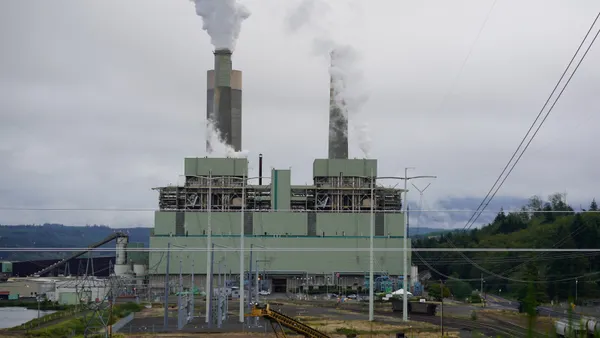Dive Brief:
- A comprehensive energy bill introduced earlier this year could come back to the Senate floor as early as July, Lucy Murfitt, chief counsel for the Senate Energy and Natural Resources Committee, said on Monday.
- The legislative package comprises over 50 bills reported to the Senate in 2019 and was introduced by Chair of the Energy and Natural Resources Committee Lisa Murkowski, R-Alaska, and Ranking Member Joe Manchin, D-W. Va., in February. It made it to the Senate floor, but was ultimately stalled by disagreements after a bill was added that would have reduced hydrofluorocarbon use.
- With the Senate focused on economic recovery from the COVID-19 crisis, efforts around the bill fell by the wayside, said Murfitt. But policy observers now say the bill could make a return as part of broader economic stimulus efforts.
Dive Insight:
Murkowski is determined to pass the American Energy Innovation Act, Murfitt said during Monday's webinar hosted by Citizens for Responsible Energy Solutions.
"I want to make sure that you understand, because I think if Senator Murkowski were on this call right now, she'd be telling you this — she is absolutely 110% committed to this bill," Murfitt said. "She has not wavered at all on that. And she's gonna fight until there's just simply no path forward left for the bill."
The legislative package received bipartisan support, though initially some were frustrated by the bill's omission of building code upgrades and tax credits for clean energy technologies. Ultimately, compromises were reached to accommodate those policy asks, said Murfitt.
"We had a path forward. Unfortunately, we hit an unimaginable stumbling block," she said.
Sens. Tom Carper, D-Del., and John Kennedy, R-La., pushed for inclusion of their bill, the AIM Act, which would have authorized a 15-year phasedown of hydrofluorocarbon use, a potent greenhouse gas used in refrigerators and air conditioning systems. That dispute became contentious enough that the Senate was not able to invoke cloture after accommodating that bill into the legislative package.
Murkowski at the time said the dispute was "beyond frustrating."
But now, Environmental and Public Works is "making real progress" on negotiations over the AIM Act, said Murfitt.
"If that does, in fact, turn out to be the case, we could bring our energy bill back to the floor, as early as July," she said. A source familiar with the American Innovation and Manufacturing Act confirmed that “significant progress on advancing the bill is being made, and there’s real hope it passes this year.” Environmental and Public Works was not able to comment on the specifics of negotiations.
Bringing this bill back to the floor could ultimately bode well for the beginnings of bipartisan negotiations on what a longer-term economic recovery package should look like, say policy observers.
House Democrats last week introduced an ambitious clean energy bill as part of their larger Moving Forward legislative proposal, and some are optimistic that Senate Republicans and House Democrats may be able to find some common ground between the two proposals, though the House bills do not have bipartisan support.
"Conceptually, there are some things that might be sort of philosophically aligned" between these legislative packages, Brad Townsend, managing director for strategic initiatives at the Center for Climate and Energy Solutions told Utility Dive.
"If we're going to spend a significant amount of money locking in infrastructure, potentially for several decades, there's a need to think about how to make that climate positive in ways that don't require us to end up needing to spend that money all over again in, say, 10 or 15 years," he said.














